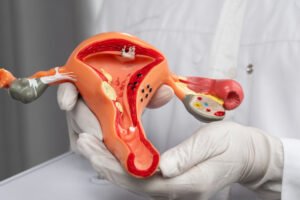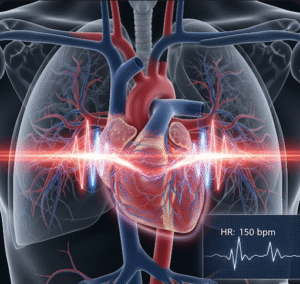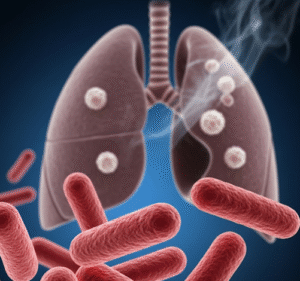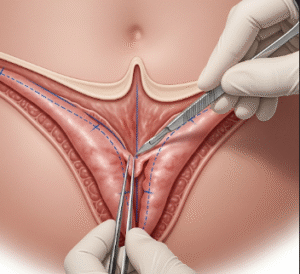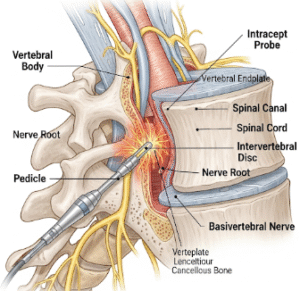➤ Overview
Spasticity is a condition characterized by abnormal muscle stiffness, increased muscle tone, and exaggerated reflexes, often resulting from damage to the brain, spinal cord, or central nervous system pathways. It is commonly associated with neurological disorders such as cerebral palsy, stroke, multiple sclerosis, or spinal cord injury.
In South Korea, spasticity is evaluated and managed by neurologists, rehabilitation physicians, orthopedic specialists, and physiatrists. Early diagnosis and management are crucial to improve mobility, prevent contractures, reduce pain, and enhance quality of life.
➤ Key Facts
→ Spasticity results from disruption of the nerve pathways controlling voluntary muscle movement.
→ It is characterized by increased muscle tone, stiffness, and involuntary muscle contractions.
→ Commonly affects arms, legs, or trunk, and may be asymmetrical.
→ In Korea, treatment often involves a multidisciplinary approach, including physical therapy, medications, and advanced interventions.
→ Untreated spasticity can lead to joint deformities, limited mobility, and chronic pain.
→ Management focuses on symptom relief, functional improvement, and prevention of secondary complications.
→ Spasticity can be mild, moderate, or severe, impacting daily activities differently.
➤ What is Spasticity?
Spasticity is a neuromuscular condition where muscles are continuously contracted due to loss of inhibitory signals from the central nervous system.
→ Velocity-dependent muscle stiffness – The faster a limb is moved, the more resistance is felt.
→ Hyperactive reflexes – Exaggerated tendon reflexes due to CNS damage.
→ Muscle spasms or involuntary movements – Can interfere with voluntary movement.
→ Functional limitations – Difficulty walking, grasping objects, or performing fine motor tasks.
Korean specialists focus on identifying the extent and distribution of spasticity through clinical assessments, gait analysis, and neurological evaluation.
➤ What Symptoms are Related to Spasticity?
Spasticity often presents with additional signs and symptoms that may indicate severity and affected areas:
→ Stiff or tight muscles in the arms, legs, or trunk.
→ Involuntary muscle contractions or spasms.
→ Limited range of motion in affected joints.
→ Pain or discomfort from continuous muscle contraction.
→ Abnormal posture or gait – Toe walking, scissoring of legs, or flexed elbows.
→ Difficulty performing daily activities, such as dressing or walking.
→ Fatigue or muscle weakness due to continuous strain.
→ Secondary skin issues – Pressure sores from abnormal positioning in severe cases.
➤ What Causes / Possible Causes?
Spasticity arises from neurological damage affecting motor control:
→ Cerebral palsy – Congenital brain injury leading to lifelong spasticity.
→ Stroke – Damage to the brain’s motor areas causing post-stroke spasticity.
→ Multiple sclerosis – Demyelination of CNS neurons disrupting voluntary movement control.
→ Spinal cord injury – Damage to descending motor pathways.
→ Traumatic brain injury – Acute CNS injury resulting in abnormal muscle tone.
→ Neurodegenerative disorders – Conditions affecting motor pathways.
→ Infections or tumors – CNS involvement leading to secondary spasticity.
→ Post-surgical or post-ischemic complications – CNS trauma during surgery or vascular events.
➤ When Should I See My Doctor?
Medical evaluation is necessary if spasticity is persistent, worsening, or interfering with daily life:
→ Sudden onset of muscle stiffness or spasms after neurological injury.
→ Pain or difficulty performing daily activities due to muscle tightness.
→ Progressive joint contractures or deformities.
→ Interference with mobility, gait, or posture.
→ Recurrent muscle cramps or spasms causing discomfort.
→ Any sign of skin breakdown, pressure sores, or secondary complications.
→ Ineffectiveness of over-the-counter pain medications or basic physical therapy.
➤ Care and Treatment
Management of spasticity aims to reduce muscle tone, relieve pain, and improve function:
→ Physical therapy – Stretching, strengthening, and range-of-motion exercises.
→ Occupational therapy – Assisting with adaptive techniques for daily activities.
→ Medications – Muscle relaxants such as baclofen, tizanidine, or dantrolene.
→ Botulinum toxin injections – Targeted treatment for localized spasticity.
→ Orthotic devices – Splints or braces to support limbs and improve posture.
→ Surgical interventions – Tendon release, selective dorsal rhizotomy, or orthopedic correction in severe cases.
→ Hydrotherapy or functional electrical stimulation – Enhances mobility and muscle control.
→ Lifestyle and ergonomic adjustments – Prevent strain and maintain optimal joint positioning.
➤ Treatment Options in Korea
South Korea offers advanced multidisciplinary care for spasticity, integrating neurology, rehabilitation, orthopedics, and traditional medicine:
Diagnosis in Korea
→ Clinical assessment using Modified Ashworth Scale and functional evaluation.
→ Imaging: MRI or CT for CNS structural assessment.
→ Electromyography (EMG) to assess muscle activity and spasticity severity.
Medical Treatments in Korea
→ Prescription muscle relaxants, oral or intrathecal baclofen therapy.
→ Botulinum toxin injections for focal spasticity management.
→ Medications combined with physical therapy and rehabilitation programs.
Advanced Therapies in Korea
→ Orthopedic or neurosurgical interventions for severe, unresponsive spasticity.
→ Comprehensive rehabilitation programs including physiotherapy, occupational therapy, and hydrotherapy.
→ Integrative approaches combining Western medicine with Korean traditional treatments for pain relief and functional improvement.
Rehabilitation & Support in Korea
→ Education on home exercises, posture management, and adaptive techniques.
→ Regular follow-up to monitor progress, adjust medications, and prevent complications.
→ Support for psychological well-being and quality of life in chronic cases.





